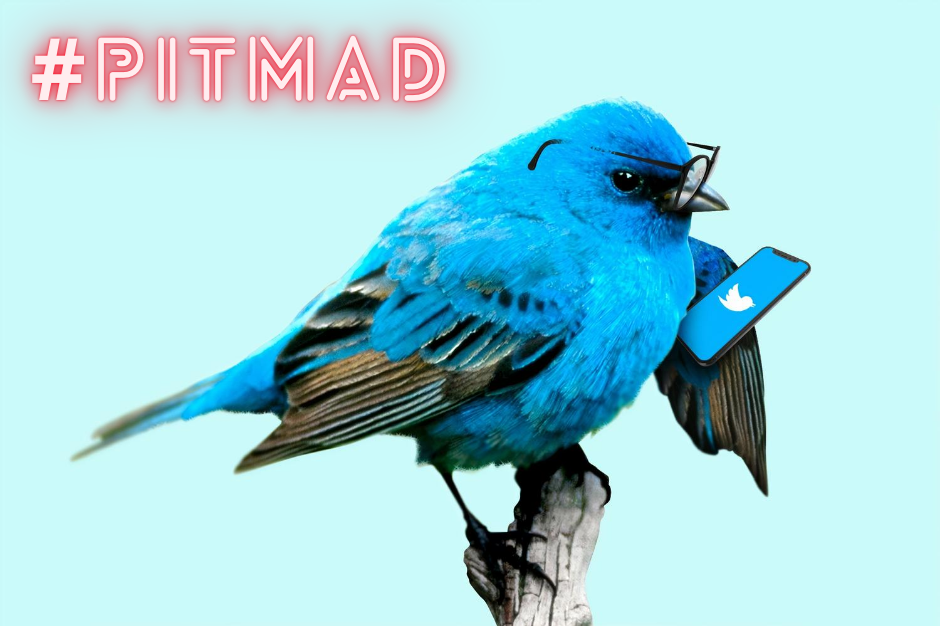#PitMad Fumbles: Mistakes Writers Make
Once a quarter, writers from all over the world scramble to compose the most compelling version of their story, in the space of a single Tweet. Squeezing the essential elements of a 90K word novel into 280 characters, and hoping their favorite agent or editor or publisher will ❤️ them.
It’s #PitMad time!
Sponsored by PitchWars.org, #PitMad is the quarterly Twitterfest where authors desperately try to catch the attention of somebody, anybody, who will request some pages. It’s a grueling, nerve-wracking endeavor, to convert your masterpiece into the Twitter-appropriate level of pith, and then anxiously watch your feed for that coveted ❤️. (I know, I did it, back in the day when I had to describe my overstuffed 117K mystery into 140 characters).
As a publisher, though, I love #PitMad. I especially love ❤️ing those few gems that come through my feed. I can tell you, CamCat Books has acquired several titles we found via #PitMad.
But before I get into the fumbles and tips, a quick rundown of the most important rules (which can be found in detail at PitchWars.org):
- Only pitch completed and unpublished manuscripts.
- The pitch must fit inside a single Tweet.
- Pitch any particular manuscript a maximum of 3 times.
Most Common Fumbles
These are the most common mistakes I’ve seen in #PitMad:
- Misidentifying the genre. The appropriate list of hashtags to use to identify genres can be found at PitchWars.org. Use the right ones! Don’t describe your manuscript as something it isn’t.
- Exceeding 3 Tweets. I’ve seen authors who’ve tweeted about their manuscript over 20 times in a single #PitMad day. This becomes little more than SPAM. The rule is there for a reason: to help us in industry manage our feeds. More about how many of us manage our feeds below, but for now, just stick to your 3-Tweet limit and be sure to spread the Tweets out throughout the day.
- Not spreading Tweets out. Some authors are unaware of Tweet-scheduling tools and just shoot their 3 Tweets out first thing in the morning, 8AM Eastern. For those of us not watching our feed at 8AM, it’s easy to miss those 3 Tweets. Use a tool such as Hootsuite or MeetEdgar to schedule your Tweets and spread them out across the 12 hours of #PitMad.
- Pitching previously published works. It’s a huge no-no, a big waste of everyone’s time, and can land you on the Never-Ever list.
- Private messaging an agent/editor/publisher to gauge interest. If we like your pitch, we will ❤️ it, or otherwise get in contact with you.
- Typos. We know you’re trying to squeeze your pitch into 280 characters, but mispelling a word (as in “werld” instead of “world”) doesn’t save you any characters at all.
- Using worlds still in copyright. No, we can’t publish as story set in Hogwarts, or Tatooine, or the Seven Kingdoms. Those worlds belong to their creators.
- Not following submission guidelines. If somebody ❤️’s your pitch, check out their guidelines, usually posted in a Tweet or on their website. (Hint: the quickest and easiest way to a rejection is to ignore submission guidelines.)
Some #PitMad Tips
Some of the following tips may surprise some people. It always surprises me how often I have to repeat these same concepts.
- Follow the rules on PitchWars.org. The rules are there to make life easier for everyone. Please respect them.
- Use a “meets” statement. Try positioning your manuscript as a cross between two well-known works. They don’t have to be books. Jaws meets Indiana Jones paints a very vivid picture in only 24 characters.
- Try this simple formula. X is a so-and-so. When something happens, X must do this. This describes the protagonist and the conflict of your story in a very succinct manner.
- Ignore extraneous characters and subplots. You don’t have room for them in 280 characters, so don’t try. Focus on your protagonist, the antagonist if there’s room, and the conflict.
- Follow a particular agent/editor/publisher’s submission guidelines to the letter. This happens so much, I listed it as a fumble as well as a tip. Every credible industry professional who participates in #PitMad will have submission guidelines posted somewhere. Follow them. All of them. Even if they seem silly to you.
- Understand a little about how industry professionals “do” #PitMad. Next section.
- Spread your Tweets out in a realistic manner. Don’t bunch them up. Pitch once in the morning, once at midday or early afternoon, and once towards the end of the day. That’s your best chance to be “seen” by that favorite agent or editor.
How Many Industry Professionals “Do” #PitMad
8AM – 8PM Eastern is a long time to be “watching” a Twitter feed. Most of us aren’t monitoring our phones all day; we’ve got work to do. Instead, most people I know use a tool such as Hootsuite or TweetDeck to break feeds up into manageable chunks (or streams), employ filters to screen out spam and Retweets, and be able to catch up on feeds at intervals during the day.
Tools such as these also let us easily see who violates the 3-Tweet rule (Fumble #2 above).
Still, after reading hundreds of Tweets, by the end of the day, we’re tired. Hint: not everybody reads every pitch posted during the 12 hour period.
Future #PitMads
I hope you found this post useful! Have questions? Be sure to leave a comment or use the Want to Chat? page. I plan to update this page after future #PitMads, so come back for more fumbles and tips.

